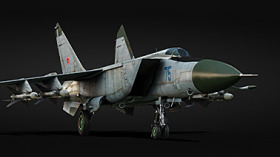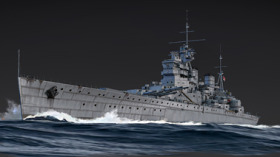
- For PC
- For MAC
- For Linux
- OS: Windows 10 (64 bit)
- Processor: Dual-Core 2.2 GHz
- Memory: 4GB
- Video Card: DirectX 11 level video card: AMD Radeon 77XX / NVIDIA GeForce GTX 660. The minimum supported resolution for the game is 720p.
- Network: Broadband Internet connection
- Hard Drive: 23.1 GB (Minimal client)
- OS: Windows 10/11 (64 bit)
- Processor: Intel Core i5 or Ryzen 5 3600 and better
- Memory: 16 GB and more
- Video Card: DirectX 11 level video card or higher and drivers: Nvidia GeForce 1060 and higher, Radeon RX 570 and higher
- Network: Broadband Internet connection
- Hard Drive: 75.9 GB (Full client)
- OS: Mac OS Big Sur 11.0 or newer
- Processor: Core i5, minimum 2.2GHz (Intel Xeon is not supported)
- Memory: 6 GB
- Video Card: Intel Iris Pro 5200 (Mac), or analog from AMD/Nvidia for Mac. Minimum supported resolution for the game is 720p with Metal support.
- Network: Broadband Internet connection
- Hard Drive: 22.1 GB (Minimal client)
- OS: Mac OS Big Sur 11.0 or newer
- Processor: Core i7 (Intel Xeon is not supported)
- Memory: 8 GB
- Video Card: Radeon Vega II or higher with Metal support.
- Network: Broadband Internet connection
- Hard Drive: 62.2 GB (Full client)
- OS: Most modern 64bit Linux distributions
- Processor: Dual-Core 2.4 GHz
- Memory: 4 GB
- Video Card: NVIDIA 660 with latest proprietary drivers (not older than 6 months) / similar AMD with latest proprietary drivers (not older than 6 months; the minimum supported resolution for the game is 720p) with Vulkan support.
- Network: Broadband Internet connection
- Hard Drive: 22.1 GB (Minimal client)
- OS: Ubuntu 20.04 64bit
- Processor: Intel Core i7
- Memory: 16 GB
- Video Card: NVIDIA 1060 with latest proprietary drivers (not older than 6 months) / similar AMD (Radeon RX 570) with latest proprietary drivers (not older than 6 months) with Vulkan support.
- Network: Broadband Internet connection
- Hard Drive: 62.2 GB (Full client)
As we mentioned in the TAN-SAM-1C dev blog, we’d like to talk about photocontrast mode! This means today we’ll be talking in detail about some of the upcoming improvements to IR missile functionality in War Thunder and what this means for IR missile gameplay.
The technical background of IR seekers
Infrared homing heads are widely used on air-to-air missiles and ground based anti-aircraft missiles. They combine the benefits of using effective missile guidance trajectories, are also cheap and do not irradiate the target with any radiation. On the surface, making the heat source of your enemy the main target for a missile has some key advantages. On the flipside however, it does have some downsides that can be found within the main principle of how a target’s thermal radiation is captured, as the target must emit infrared waves for this to work. The higher the intensity of the radiation, the better. The range at which target lock on and tracking actually works greatly depends on this. In addition to this, a missile going for a heat source can be easily deceived by false sources of infrared radiation, such as flares.
Slower aircraft that have piston and turboprop engines emit a small amount of heat and the radiation from a jet engine is almost invisible from the frontal aspect in many cases. An infrared homing seeker head can detect a target like this at fairly modest distances. The same IR seeker of a MANPADS can capture a small helicopter from a distance of only 2-3 kilometers at most. However at this distance, you’re prone to being shot at quite easily, even by unguided aircraft rockets. Anti-aircraft missiles with an infrared seeker in those particular conditions can often hit a target as it exits from its attack run. However in this case, it relies on someone being there to launch them at this very moment.
The use of photocontrast mode
These shortcomings with the use of IR seekers as part of military air defense were especially relevant in the 1960s, when the development of IR seekers did not yet make it possible to confidently isolate a useful thermal signal from a target in the forward hemisphere. This is when the idea of using the visible wavelength range for target tracking came about. The Strela-1 was one of the first air defense systems to use a photocontrast homing head for targeting. This made it possible to capture and engage targets on opposing courses and ensure the protection of troops even before the target launched an attack. A photocontrast channel also has its own drawbacks to consider. The target can only be engaged during the day and in clear weather conditions, and the background behind the target must be uniform.
The use of combined dual and triple-band homing heads helps to smoothen out the shortcomings and makes a missile defense system function in all-weather and in day and night conditions. In difficult weather conditions, against low-flying targets and at night, guidance in infrared mode is used, and when launching from a long distance and against weakly emitting targets, photocontrast mode is used. It is also recommended to use photocontrast mode against targets on a collision course when they use countermeasures, to which the photocontrast channel is less sensitive compared to the infrared one. A dual-band seeker of this kind is equipped on the 9M37M missile system of the Strela-10M2, which is already present within the game. The use of an IR channel made this missile all-weather compatible, whilst the photocontrast channel provides the ability to capture a target and fire at it from long ranges, even exceeding the maximum flight range of the missile.
Photocontrast mode in War Thunder
Within War Thunder, the photocontrast channel will be present on missiles that are a successor to the Strela-1 system. Namely the 9M37M missiles of the Strela-10M2 SAM, as well as on the Japanese Type 93 SAM. With the release of the “Kings of Battle” major update, the Type 81C SAM will also benefit from this improvement. In game, you’ll have the ability to switch between three modes: photocontrast, infrared and automatic, which is enabled by default. In automatic mode, the seeker will perform a lock on in the most appropriate mode. However, you must take into account that after launch, it will not be possible to switch between modes. If the target was locked on in photocontrast mode, but evaded by going lower to the ground, then target tracking will fail and the missile will miss its mark.

You can look forward to these improvements and many others in the upcoming major update “Kings of Battle”! Until then, enjoy your matches and see you soon!







Comments (39)
Comments will be premoderatedAre other IR SAM systems also planned to get a revision where is due? Namely the FIM-92K is missing datalink for target acquisition and the Mistral is underperforming against low IR targets. Maneuverability is another question. The bug reports should be known already and I think it's only fair now that some of it gets implemented. Unless BR changes are also planned.
I find it weird there's a lot of emphasis on the strela but not stingers. Will the stingers be getting something similar or will they be ignored? (They're dual-band IR and UV) Also what's that UI element above the F + Alt bind?
You can hide the action bar by clicking on that button.
It's for completely hiding those options(the UI thing), it was already on dev server. I think it would be more useful if it only minimized those options cause you need to know if some of them are available at any time, like the arty or the fire extinguisher.
"the radiation from a jet engine is almost invisible from the frontal aspect in many cases." Seekers that work in the 3-5um region can detect the CO2 plume which radiates outward, ez visible from front "The same IR seeker of a MANPADS can capture a small helicopter from a distance of only 2-3 kilometers at most." This is not the case for Mistral, which has an >4km frontal lock range against helos with thermal suppression equipment for Mistral 1, >4.5km for Mistral 2 and >7.5km for Mistral 3
For the record: Mistral 1 has the roughly the same seeker as Magic 2, while being 2-3x more sensitive than it, so it should stand to reason why it performed so well. If only that was acknowledged in-game, instead of it being arbitrarily nerfed.
The jet intake blades are also extremely hot and definetly visible from front aspect on many planes but this is not modelled in game.
"If the target was locked on in photocontrast mode, but evaded by going lower to the ground, then target tracking will fail and the missile will miss its mark." I don't know about the Strela, but the Type 93 and Type 81s missiles should track both bands (within the respective ranges), they don't just select one. While one is used for the initial lock the other still functions as a backup. Please consider changing this to their correct function.
Nice!
SAMS suck...
When the lock is optical
is this a question or a statement?
surely the russians needed this buff because they don't have a top tier SPAA already in the game. oh wait they do. why do gaijin keep ignoring other nations? You keep claiming that there's no bias but your actions constantly prove otherwise
Haha nice haha now give the current MANPADS and Western SAMs their real performances
doesn't current vehicles will need a BR change for such new ability?
The most significant impact of this is improved flare resistance when tracking targets, allowing for the actual engagement of helicopters. I don't believe it will be that game-changing.
Drag0oon, I would say that's pretty game changing for a system like the Strela, which now pretty much gets its lock ranges improved as well as its flare resistance. Coupled with the fact it has 20G missiles, 9.3 seems a little low when it competes with 10G missiles which also barely lock on helicopters.
We're talking about land-based AA missiles that don't lock on to a helicopter before 1.8 km for modern helicopters and less than 1 km for Alouettes 2. So your sentence is a bit ironic, isn't it? (The same IR seeker of a MANPADS can capture a small helicopter from a distance of only 2-3 kilometers at most.)
Submit a complaint